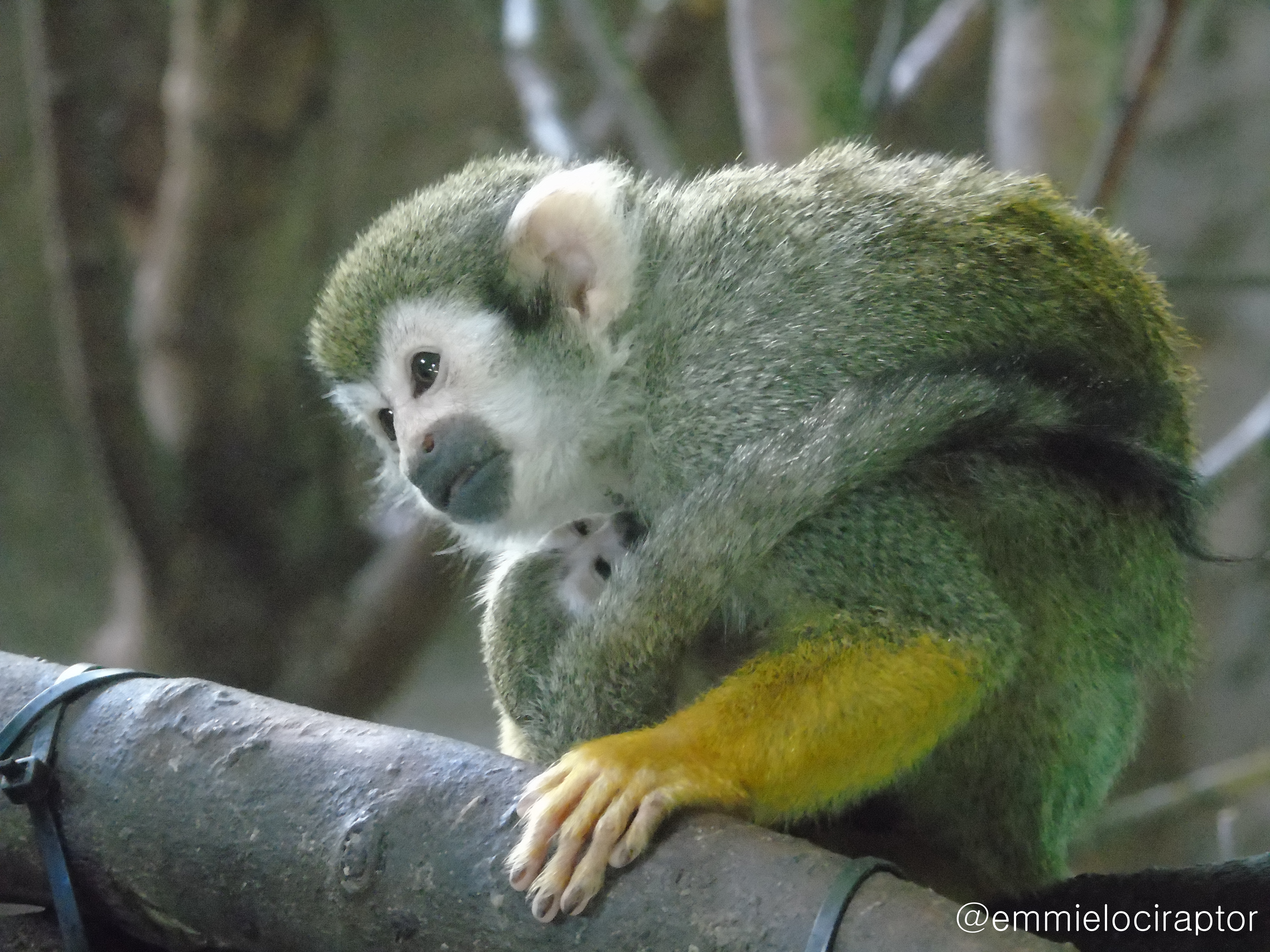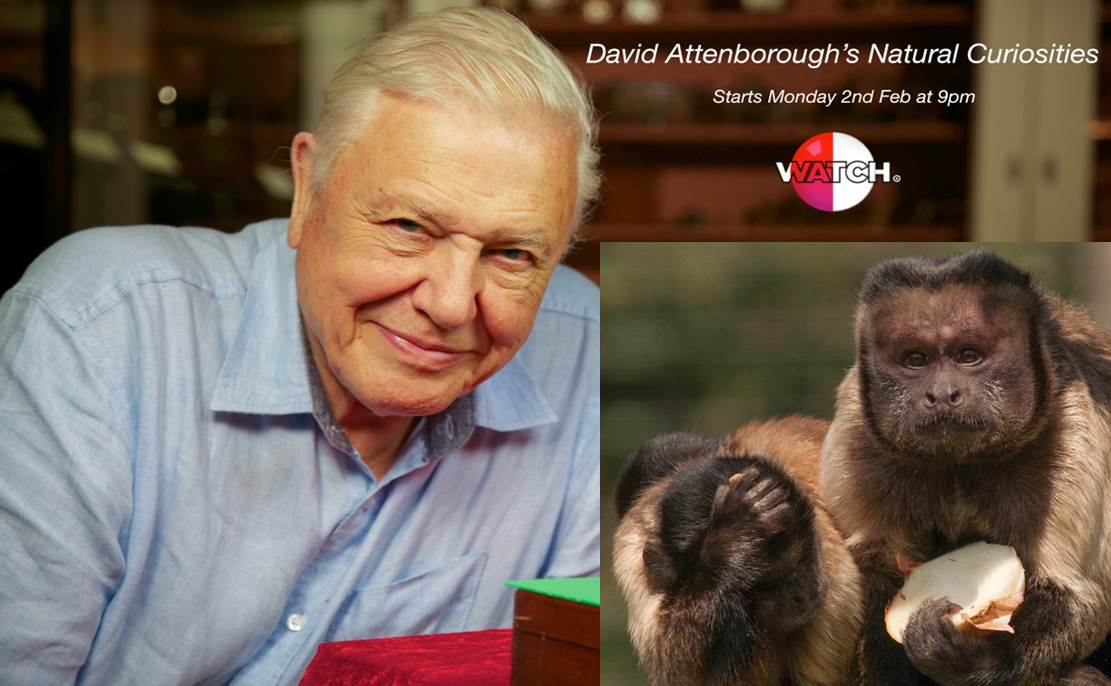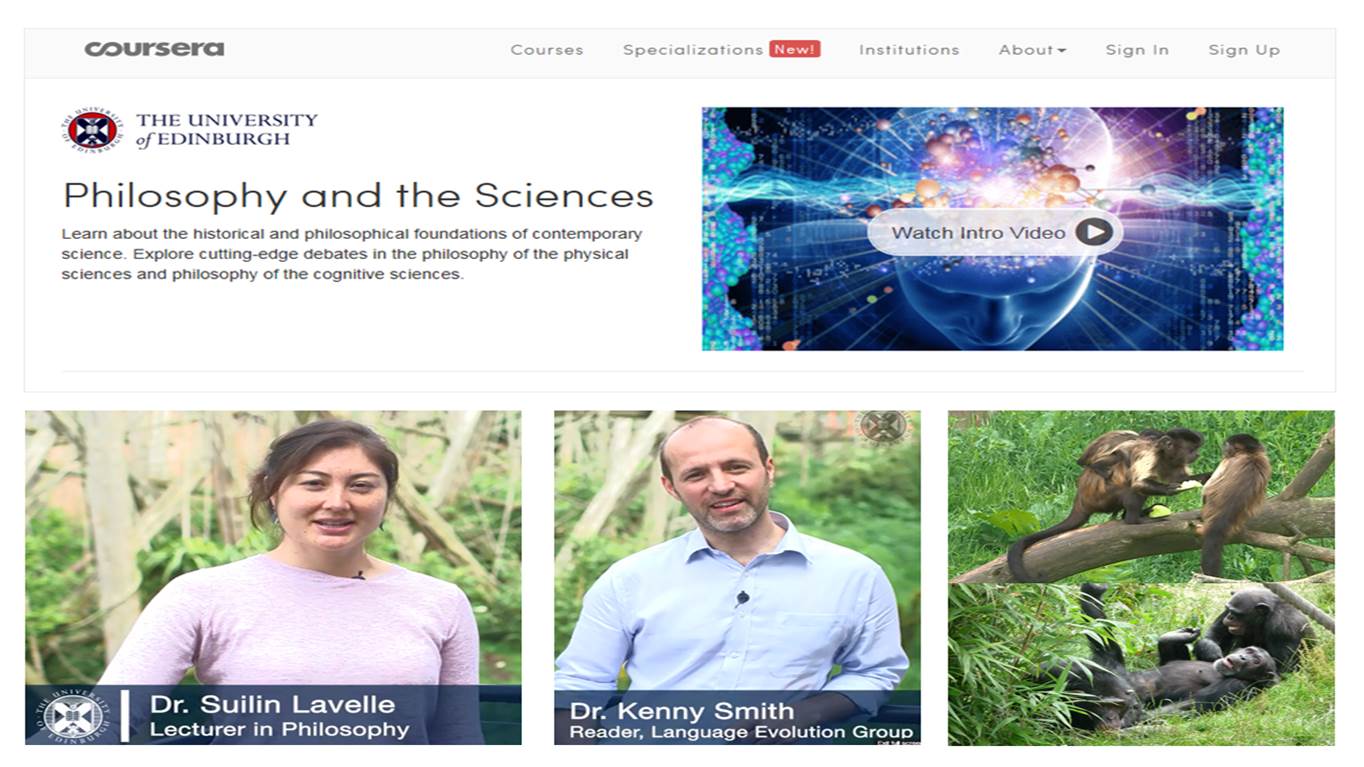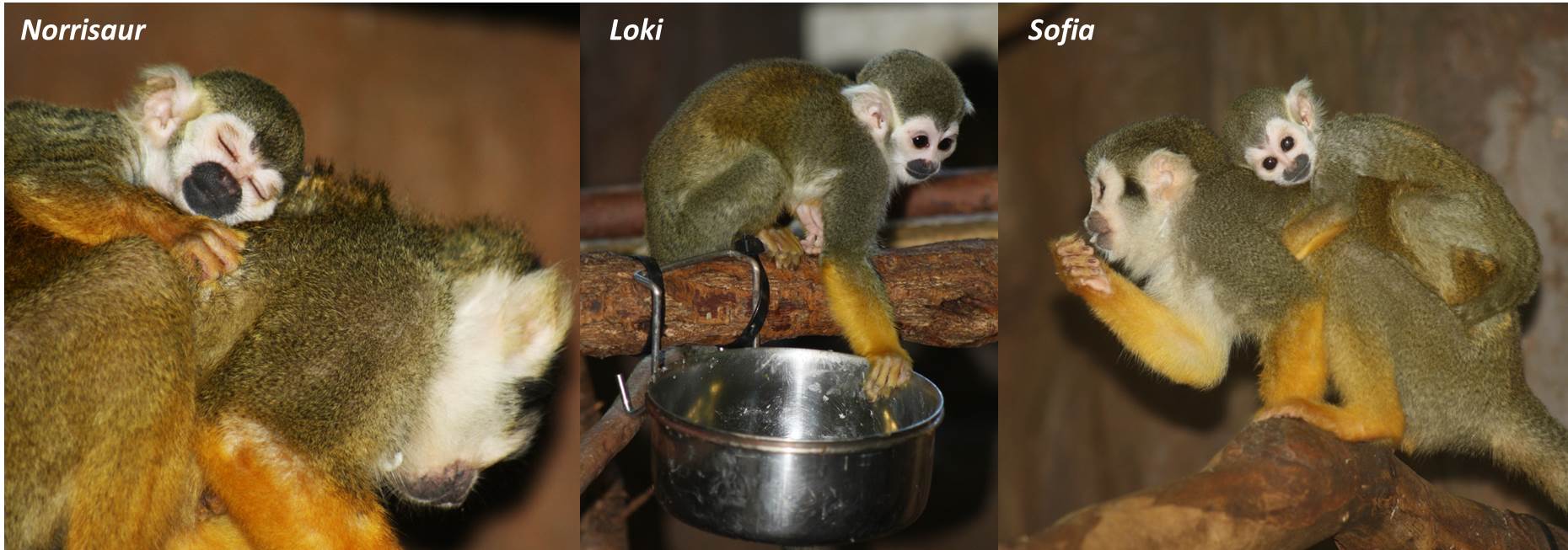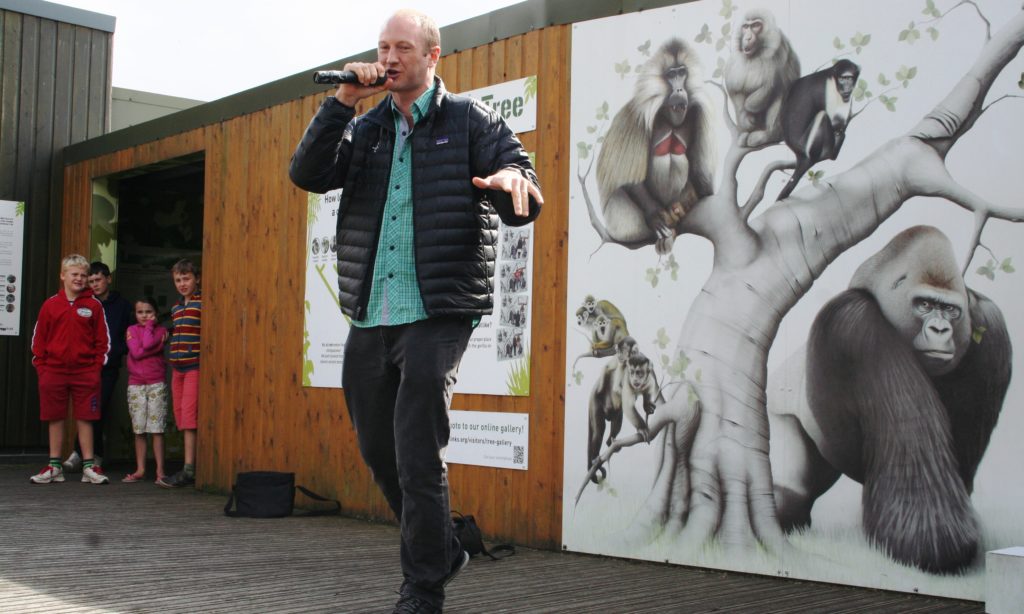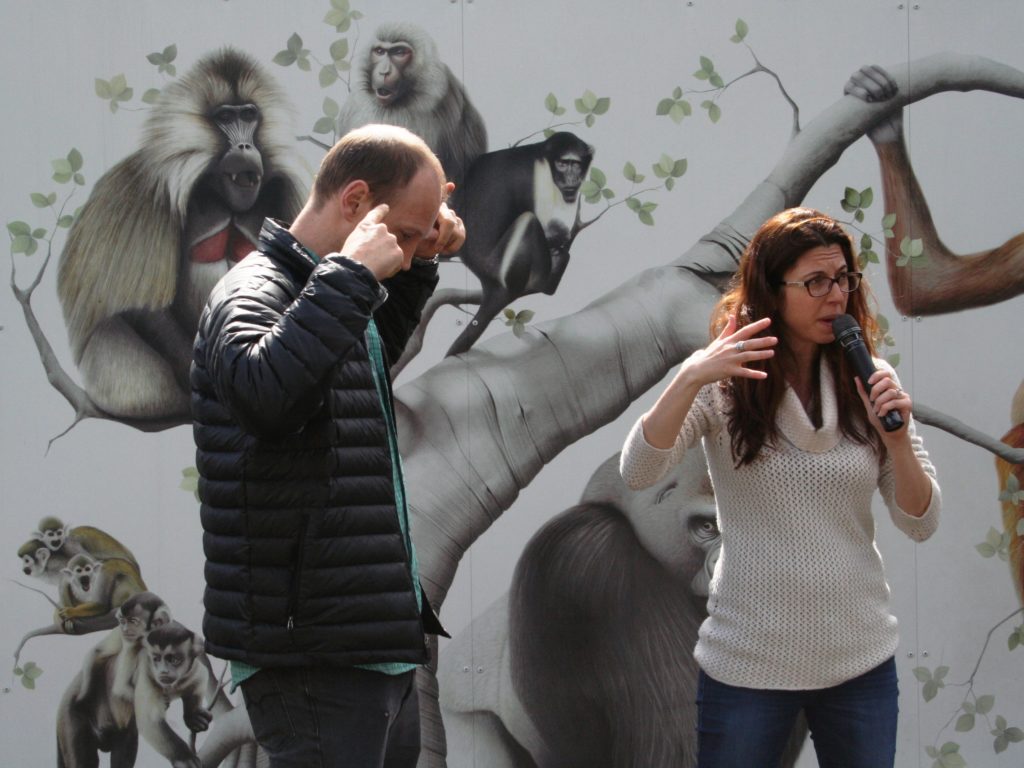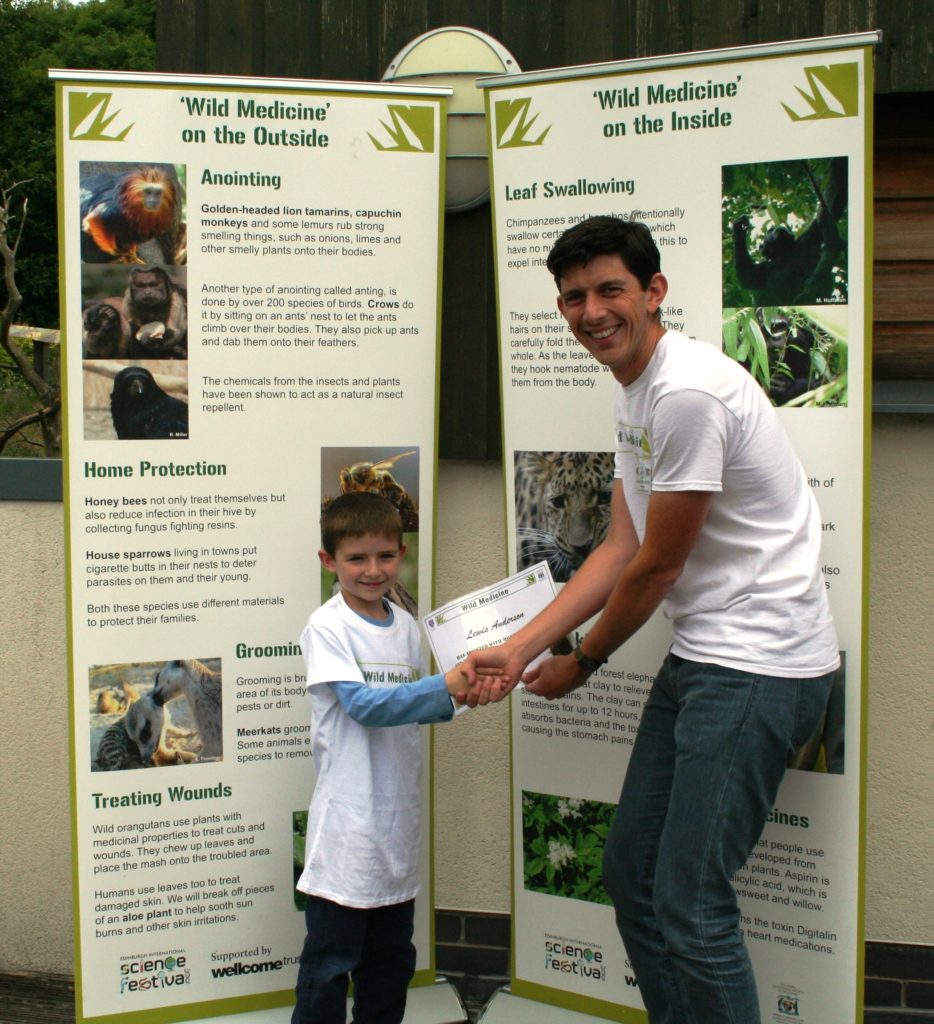Some of our regular visitors may have noticed that Living Links has recently undergone a change in appearance- after 15 years it felt time for a refresh! Led by Research Fellow Anna Redly, Director Professor Amanda Seed and RZSS Interpretation officer Krystyna Keir, the RZSS and University of St Andrews teams have worked closely together to design and implement a fresh, fun and colourful new look to Living Links.
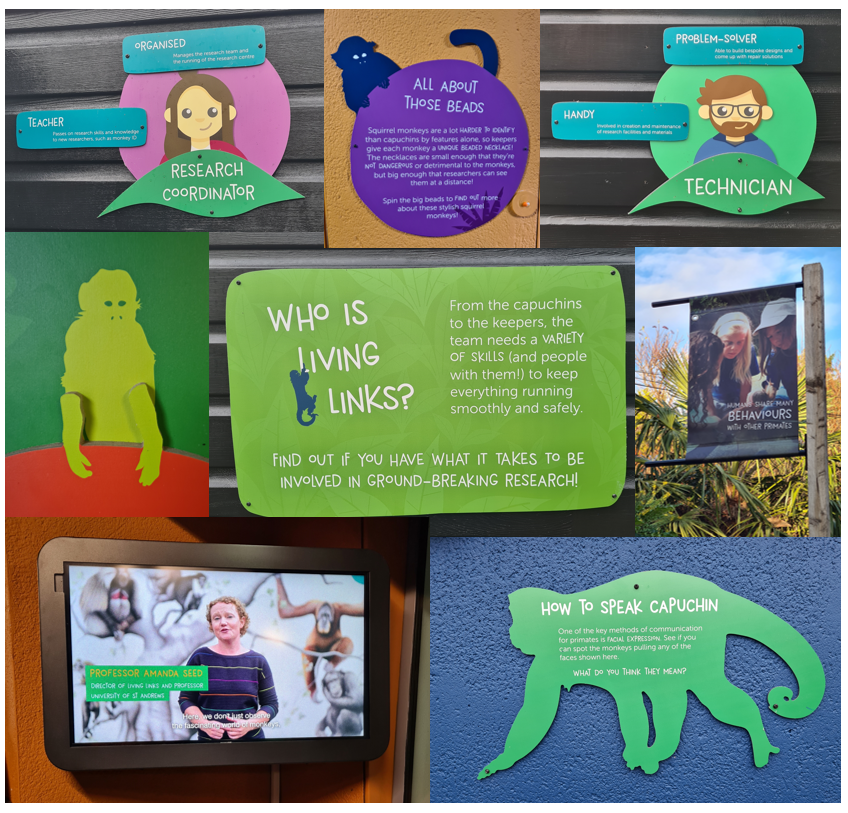
While the work is ongoing and covers several phases, visitors can already enjoy the benefits of the new look Living Links so far! New flags lead the way up the walkways to Living Links, highlighting some of the similarities between us and non-human primates; problem solving, learning, curiosity, playfulness. The different careers supporting the running of Living Links, from keepers to researchers to technicians (and YOU!), are highlighted when you first reach the outer balconies, and will be a feature we focus on in the new Living Links theme.
Our bright new fun colour scheme can be seen throughout the building, inside and out. In front of the windows of the monkeys indoor enclosures we have spinning cubes and panels for visitors to meet some of our monkey faces, learn a bit about them and try to ID them through the window! These have proved extremely popular with children, so much so that we had to install quieter spin systems as the constant use of them was slightly disturbing the monkeys during research!

Outside there are information flaps on monkey behaviour, the ever popular primate family tree with linked information, and soon we will have some behaviour spotting panels and QR links to online monkey ID guides. We will have students running occasional citizen science research from here, asking for your help with one of our long running welfare studies, and we hope this popular task will run more regularly in 2024.
Exiting the exhibit on either side, the flags display a ‘did you spot us…’ examples of behaviours you may see from the monkeys at Living Links- and if you didn’t see it on this visit, keep an eye out next time you are at Edinburgh Zoo!

There are a number of new features still to come later this month, including a ‘join the team’ face cut out board and a special ‘Living Links through time’ highlighting the key people and research themes that have featured at Living Links over the past 15 years. We will also be gradually developing interactive citizen science games for a large screen that will be part of the Living Links timeline, highlighting the importance of getting YOU involved in future research!
There is room for further development with visitor feedback, so we would love to hear from you if you have any particular ideas of what you would like to see or do at Living Links and if you would be interested in being more involved with everyday science! Contact us at livinglinks@st-andrews.ac.uk with your input or join our newsletter to be kept up-to-date!

